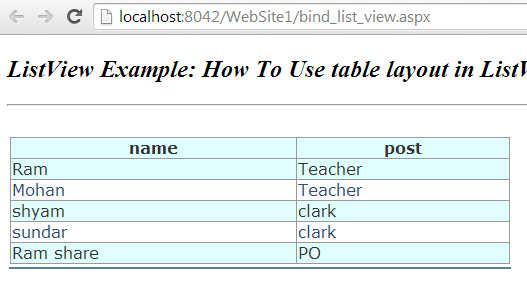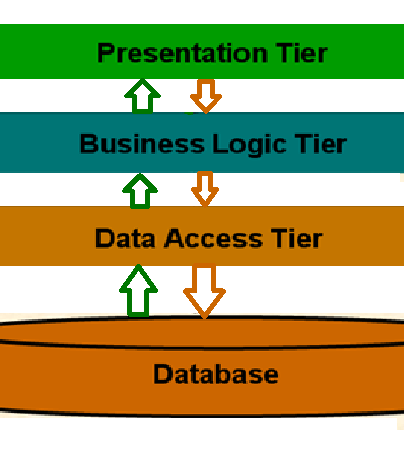What is tree view how to use in asp.net application:
What is tree view how to use in asp.net application:
- The TreeView control is the container for displaying the parent/child relationships.
- The TreeView control contains 1 – N tree nodes.
- A tree node represents an element in the parent/child relationship.
- A tree node can be the parent and/or child of other tree nodes.
- Tree nodes that have child nodes can be expanded to display their child nodes.
- Tree nodes that have child nodes can be collapsed to hide their child nodes.
- Tree nodes have a property named NodeData that can be used to store meta-data.
- Tree nodes can display images (think of Windows Explorer where an image of either a closed or open folder is displayed).
how to use in asp.net application:
Tree nodes can be hyperlinks to other web pages or sites.
What is the NodeData property?
The TreeNode class provides a property named NodeData. This
property is a great place to store meta-data you may need to access either on
the client or on the server.
The issue is the property’s underlying type is a string. So
how do you store several pieces of meta-data in the property? Well, I’ve found
the easiest way to do this is to create a delimited list of key valued pairs
that can be accessed on either the client or server. I typically use a
semi-colon (;) as the main delimiter and separate the key and value with an
equal sign (=). For example, I would store meta-data in a tree node’s NodeData
property as follows:
TreeNode tn = new TreeNode();
tn.Text = "Root Parent Node";
tn.NodeData = "Id=1000;Name=Mike
Elliott;Article=ASP.NET " +
"Tree View Control & the Client's Browser";
You can get at the NodeData property’s information on the
client by accessing the element's nodeData attribute. This will allow you to
obtain detail information about the tree node which the user has selected and
display or submit the information as necessary. This single piece of
functionality can reduce the majority of round trips or post-backs generally
caused by needing meta-data associated with the node selected by the end user
(this will be demonstrated later in the article).
You could choose to use XML instead of a key valued pair,
but for performance reasons, I prefer to work with key valued pairs because
they are stored in arrays.
Preparing to build the examples
Before jumping into examples, I want to provide a little
set-up information in case you want to follow along.
The first step is to download Microsoft’s free control
suite. The control suite contains more than just the TreeView; however, I am
not going to cover the Tab control in this article. Once downloaded from the
URL listed earlier in this article, you will have to build or run the build.bat
file to produce the Microsoft.Web.UI.WebControls assembly by following the
instructions in the readme file obtained in the download.
Be prepared, the .bat file distributed with the free
download has a bug that may prevent the .dll from being produced (most of the
time), and there are no warnings or exception messages given.
Learn More About TreeView
Learn More About TreeView
Other Related Post:


Comments
Post a Comment